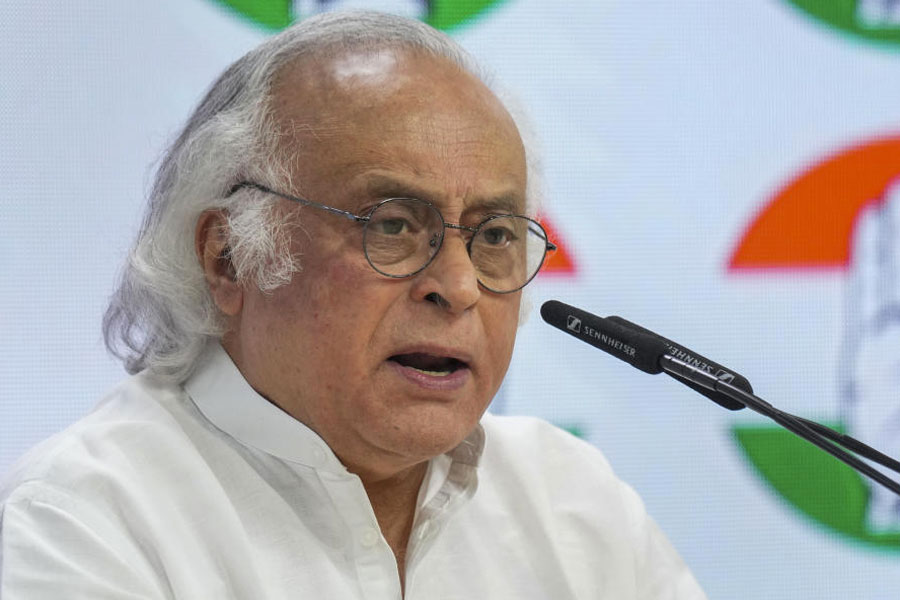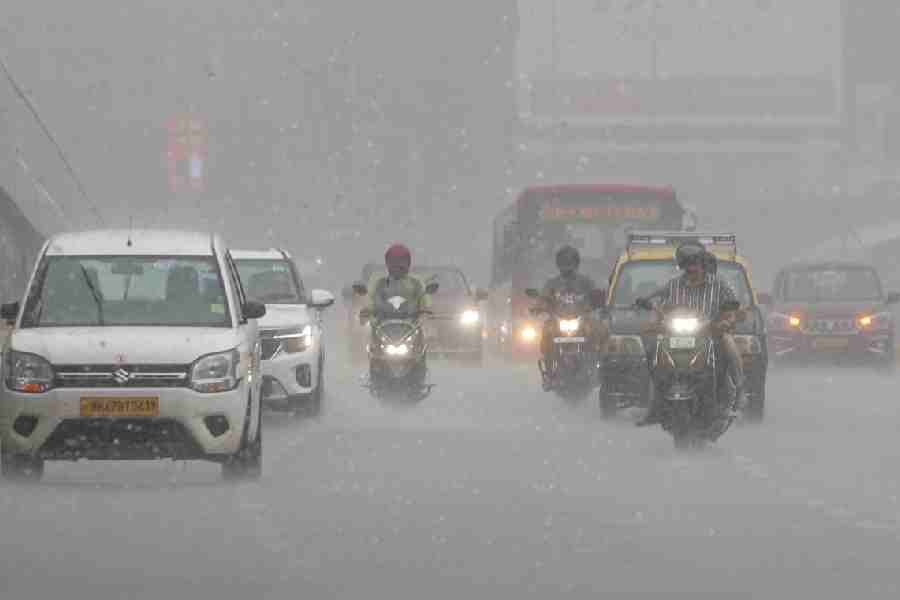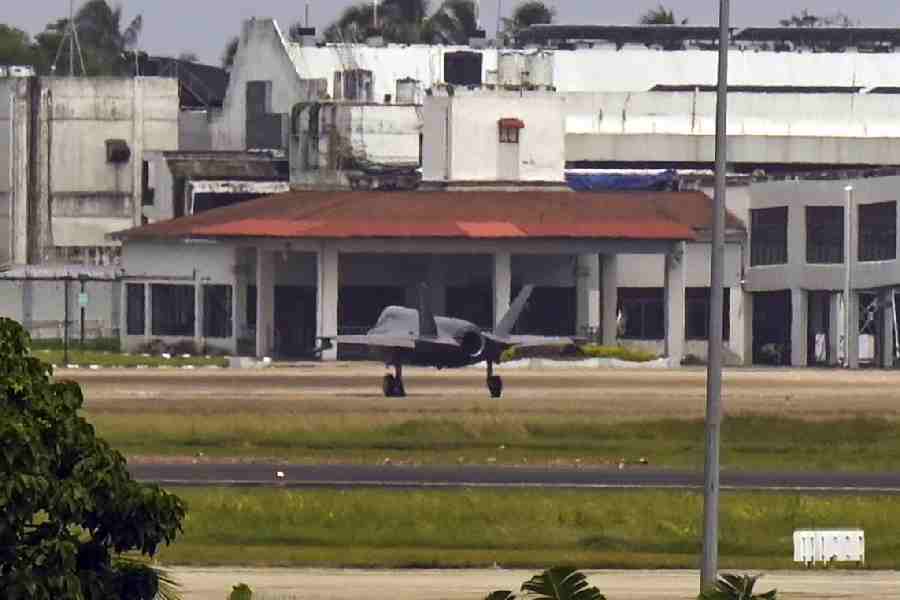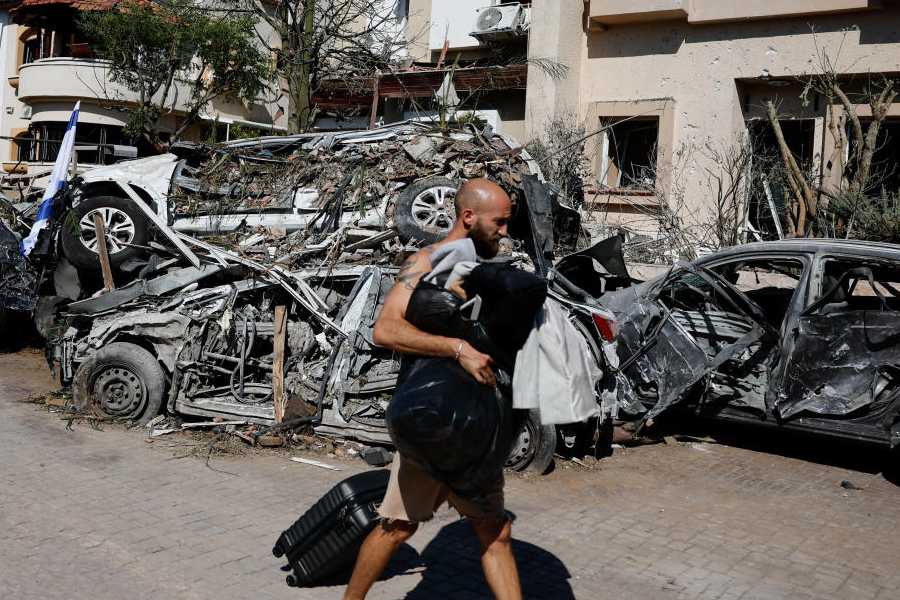
The barbarism at Ramjas College has a local history and a pan-Indian purpose. The local history is that starting forty years ago, a group of teachers centred in the college's history department began pushing back against the dysfunction, entropy and lumpenism that characterized, in lesser or greater degree, many undergraduate colleges in Delhi University. They weren't alone in this; all over Delhi University knots of lecturers who saw teaching as a vocation helped students swim free of the banality and inertness of the B.A. business. To the extent that it was singular, Ramjas's ginger group combined an enthusiasm for teaching with a democratic passion for causes and, sometimes, the charismatic ability to inspire (and infuriate) students and colleagues.
Year after year, Ramjas and its students organized seminars, cultural events and adventurous, yet frugal, college expeditions. A recognizable Ramjas 'type' emerged: curious, undeferential, sharp, as likely to become a journalist or film-maker as a professional research student. This meld of inquiry, scepticism and worldliness is what universities ought to aim for and Delhi University, with all its defects, has been one of the few campuses in contemporary India where freethinking and dissent haven't been squashed by bureaucratic sanction and political intimidation. This is partly because it is a Central university located in Delhi, remote from the provincial interference and thuggery that long since destroyed once good state colleges and universities. But it is also because good teachers and keen students in the scores of affiliated colleges that constitute this massive university worked to build and institutionalize an uneven but real intellectual culture. And they did it in a university which, unlike JNU, isn't left wing by default, where the student body has long been dominated by either the ABVP or the NSUI.
The physical assault on the college auditorium and the students and teachers participating in a seminar within it was a calculated attack on this real but fragile intellectual autonomy. It was an exemplary beating of the sort a headmaster in a boarding school might administer to a student as a way of dramatizing for his pupils the consequences of disobedience. That Ramjas was the staging ground for this violence wasn't an accident; given the college's freethinking past, there could be no better place for the student's wing of the RSS to enact the new normal.
This is where the local history of Ramjas meets the pan-Indian plans of the sangh parivar. The Akhil Bharatiya Vidyarthi Parishad that led the attack has, since the inauguration of the Narendra Modi government, been the prime mover in the Bharatiya Janata Party's bid to capture Indian universities. In Hyderabad, in JNU, in Jadavpur University, in Jodhpur University and, now, in Ramjas a pattern has repeated itself. The ABVP will first take exception to an event on campus. This could be a film screening, a lecture, a demonstration, a seminar, anything that can handily be described as anti-national. It will then solicit the aid of helpful BJP legislators or ministers to use the sinews of the State - the relevant ministry or the local police force - to intimidate university administrations, to arrest its ideological enemies on campus or to look the other way while its goons go rampaging.
In its present avatar, with the BJP in command of an absolute majority at the Centre, the ABVP isn't a student body, it is a vigilante organization, the sole purpose of which is to coerce Indian universities and their students into obeying the ideological writ of the sangh parivar. The BJP sees Indian universities as treacherous swamps that need to be drained. The finance minister, Arun Jaitley, said as much at an event in the London School of Economics immediately after the violence at Ramjas. There is, he said, "an alliance of subversion" in Indian university campuses between separatists and the ultra left. The ABVP is best understood as a campus Salwa Judum, a vigilante militia informally licensed by the party that currently controls the State to police India's universities on its behalf.
Ramjas represents an escalation in this effort. In Hyderabad and JNU, the ABVP played the role of a police informer; here it used the police on the day of the seminar at Ramjas as a friendly auxiliary and went on the attack itself. Stung by its reverses in Hyderabad and JNU, the ABVP resorted to direct action because it saw Delhi University as its turf. That some policemen felt emboldened to join in the violence (and were subsequently suspended for it) is a sign of how far the rot has gone.
The vigilante mob that stoned the auditorium, nearly strangled one of the teachers and attacked other students wasn't merely attacking free speech; it was calling time on the right of students and teachers to be physically safe, to not fear for their lives on campus. I was a young lecturer in Jamia Millia Islamia when a violent mob roamed the campus, holding a university to ransom in 'protest' against the vice-chancellor's interview on the subject of The Satanic Verses. Mushirul Hasan, the pro-vice-chancellor at the time, was physically attacked. We don't realize how fragile civility and safety are on a campus till they are destroyed by violence. It takes years to restore the trust that made them possible in the first place. Forget ideas, if a campus isn't a safe space physically, it is nothing.
The sangh parivar's current assault on university campuses is made worse by the fact that it isn't about universities at all. The ABVP is using universities as public altars where students and teachers are offered up as sacrifices to the Great Jingo. A vicious chauvinism is being publicly articulated and performed using students as extras and colleges as props.
But large public universities aren't easily silenced. After decades, I returned to Delhi University to march in support of a cause. It was strange, even depressing, driving into a campus where I had been an undergraduate forty years ago to join a demo defending freedoms a university ought to be able to take for granted.
The mood didn't last; the march was exhilarating. To be one of thousands of cheerful, determined (and mildly apprehensive) marchers is a buoyant business. To hear students shouting familiar slogans that you once found both rousing and absurd, to walk down familiar streets, is to march with live bodies and ghosts of demos past. It is to reaffirm that students and teachers aren't extras, that they have speaking roles where they literally write their own lines. I looked up to see an enormous tricolour at the head of the procession and felt a surge of something; how did we let these goons steal our colours? " ABVP", chanted a mocking chorus of girls behind me, "why so creepy?" The sun was on our backs, a din in our ears as we walked past Daulat Ram, turned left towards Ramjas and then gathered in the square by the arts faculty, reclaiming the university, one step at a time.











